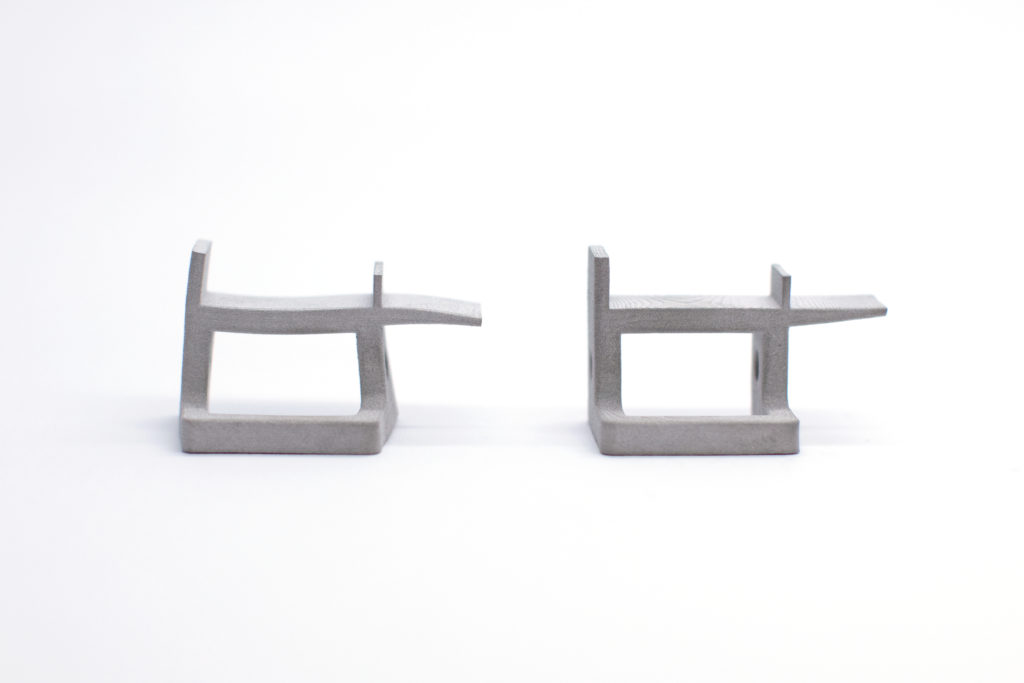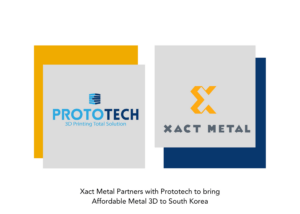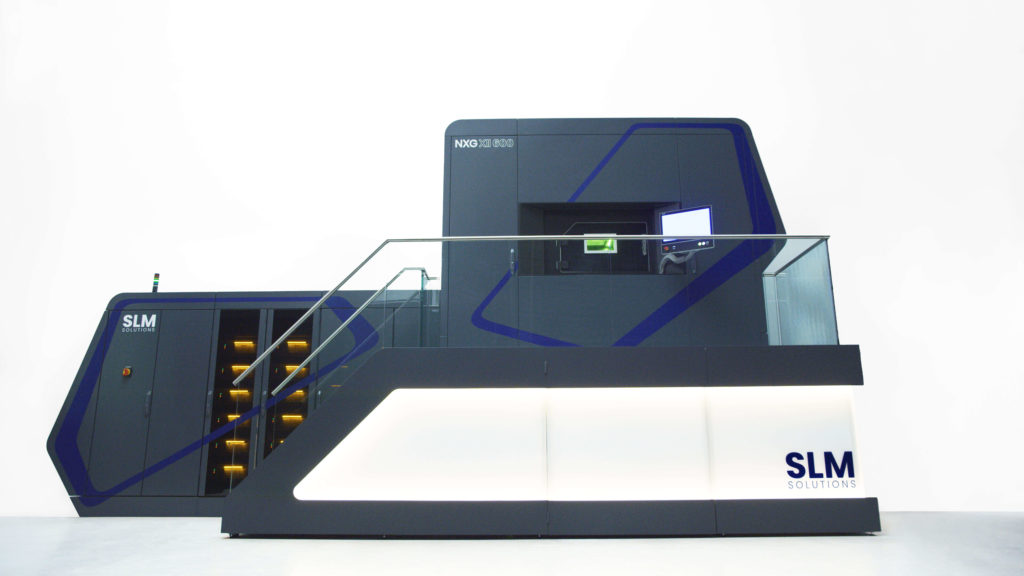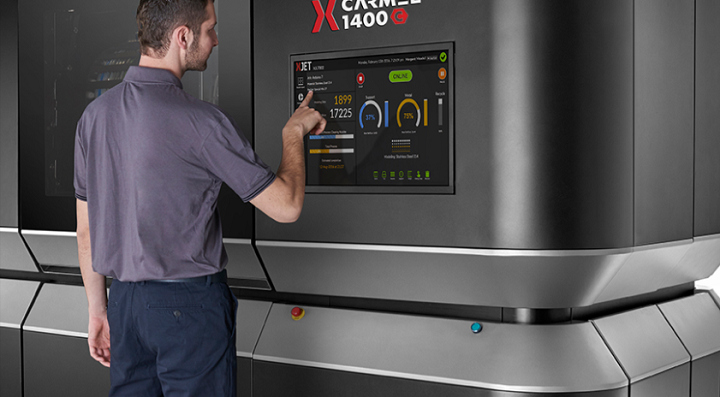We’re starting with software first in today’s 3D Printing News Briefs, and then moving on to ceramic and metal 3D printing and business. We’ll end with 3D printing being used to make scientific data more accessible.
Desktop Metal Upgrades Live Sinter Software

The metal part on the left demonstrates how a metal part warps in the furnace after 3D printing, while the part on the right shows how a part design modified by Live Sinter delivers the desired result.
In 2020, Desktop Metal first introduced its Live Sinter solution, a multi-physics simulation software application that automates sinter-ready, 3D printable geometries, supports, setters, and more to enable repeatable volume production of end-use metal parts. Now the company has announced significant upgrades to the tool, which is used by over a hundred companies around the world. After scan-based adjustments, Live Sinter makes it possible to correct complex distortion effects in as little as 20 minutes, so parts fall within 1% of target dimension and avoid warping, distortion, and other common sintering issues. Users can also fine-tune simulation results based on one or multiple scans to ensure further accuracy in metal binder jet parts production.
“Within the field of sinter-based additive manufacturing, Live Sinter stands alone for its ease of use and functionality. No other solution offered today combines our powerful, rapid multi-physics simulation with scan-based adjustments and automated support and setter generation,” stated Desktop Metal Founder and CEO Ric Fulop. “Customers continue to report their absolute delight with this tool to us, and we look forward to continuing to invest in advancing Live Sinter to make sinter-based manufacturing accessible to an ever wider audience, including metal injection molding customers.”
Xact Metal Brings Affordable Metal AM to South Korea with Partnership
Based in Pennsylvania, Xact Metal is working to establish a new level of price and performance in metal AM, and make the technology more accessible for small- to medium-sized companies. Now, the privately funded company has just announced an exclusive sales and service partnership with Prototech that will bring its affordable solutions to South Korea. The professional 3D printer provider also partners with Stratasys, TRUMPF, Desktop Metal, and other brands in the AM industry, in addition to offering reverse engineering and prototyping services.
“At Xact Metal, we’re establishing a new level of price and performance in metal 3d printing by taking the essential specs of metal additive manufacturing and combining them with breakthrough technology. We are pleased to partner with Prototech as we help customers start their journey from plastics into metal 3D printing,” said Juan Mario Gomez, CEO of Xact Metal.
“The sales and service partnership with Prototech, South Korea complements Xact Metal’s aim to support customers locally. Prototech’s experienced and technical team in South Korea is dedicated to 3D printing equipment and service, making them a great partner for Xact Metal as we continue our journey.”
Keselowski Advanced Manufacturing Installs Two EOS M400-4 Printers

Keselowski Advanced Manufacturing LLC installed two more EOS M400-4 3D printers this week for a total of twenty additive machines on the manufacturing floor.
Continuing to speed up its integrated advanced manufacturing growth, Keselowski Advanced Manufacturing (KAM) has installed another two large-format printers from EOS. With the addition of the two M400-4 metal systems, KAM now offers five large-format EOS systems, in addition to 15 others, for a grand total of 20 3D printers installed at its North Carolina facility, in addition to 12 multi-axis CNC machine tools.
“One of the biggest challenges to our industry is in building end-user confidence in the manufacturing supply chain. The rapid growth in both volume and size of additively manufactured parts must be answered with a corresponding increase in machine bandwidth, material availability, and finishing capability,” explained Brad Keselowski, Owner and Founder of KAM. “Responding to this development is critical, and today we are adding two more large platform EOS M400-4 printers. The machine installation today speaks to KAM’s commitment to keep pace with the AM industry and our customer needs.”
Divergent Technologies Signs SLA for SLM Solutions NXG XII 600 Fleet
Divergent Technologies and SLM Solutions have had a joint development partnership since 2017, working together to advance economical, serial production of complex 3D printed structures in automotive and defense applications. To secure its AM-based business model and resulting output, Divergent has now signed a long-term Service Level Agreement (SLA) for the entire SLM NXG XII 600 fleet of printers. This means that by the end of 2022, an installed base of six of these 12-laser systems will support the series production demands of the Divergent Adaptive Production System (DAPS), the company’s end-to-end digital production system. SLM Solutions defined a new type of SLA that’s based on not only the secured technical availability of its NXG XII 600 printers, but also the residual machine portfolio. This availability-based agreement covers all six NXG XII 600 assets, with a dedicated Field Service Engineer onsite.
“The NXG XII 600 is designed to produce serial production for highly complex applications as well as for printing large parts,” stated Gerhard Bierleutgeb, SLM Solutions’ Chief Operating Officer. “Therefore, it is of utmost importance to provide our customer base a white-glove service commitment to allow them to facilitate the machine according to their need. No idle printers here.”
The Barnes Global Advisors Team Welcomes Two New Members
The Barnes Global Advisors (TBGA), the largest independent AM engineering consultancy, has welcomed two defense and advanced manufacturing industry veterans to its ADDvisor team. Andy Davis, most recently the Deputy Program Director and Chief Technology Officer for the Industrial Base Analysis and Sustainment Program (IBAS) within the Office of the Secretary of Defense, is in the new role of TBGA’s Director of Government Programs. A founding member of the US Army’s AM Community of Practice, Davis will lead strategy and execution as the consultancy supports government customers with increasing resilience of the defense industrial base. Ethan Clare, who is joining TBGA as a Project Manager, previously held a distinguished role at Lockheed Martin Skunk Works to drive advanced manufacturing into production programs, and most recently worked at nTopology. He will focus on efficient execution of advanced manufacturing, government programs, and supply chain optimization.
“These additions to the TBGA team will drive our continued growth into advanced manufacturing supporting public and private customers through strategy, workforce development, and qualification,” stated John E. Barnes, TBGA Founder and Managing Director. “We’re proud that these efforts support economic growth by restoring our national manufacturing capability and improving domestic supply chain resilience.”
3D Printed Lithophanes for Visually Impaired Chemists

The lithophanes are only half a millimetre thick and can be used both by blind and sighted scientists. Source: © Jordan Koone and Bryan Shaw
A team of US researchers, led by Baylor University biochemist Bryan Shaw, is making it possible for blind and visually impaired chemists to “see” scientific images and charts. As they explain in a research paper, the team used 3D printing to convert the charts and images into lithophanes, which present this high-resolution data in a tactile way. Shaw’s son has tumors in both eyes, and while he can still see well, many of his friends don’t, which got Shaw thinking about how to make science more accessible. Starting out by converting pictures into tactile graphics using a home 3D printer, he eventually got his students involved as well, and they turned to 3D printing lithophanes of textbook illustrations, gel electropherograms of proteins, micrographs of a butterfly chitin scale, and more. Then, they compared how well groups of sighted, blindfolded students and researchers, and visually impaired ones, could interpret the data, and for the majority of the questions, the blind chemists scored at least as well as the sighted ones using the 3D printed lithophanes. Shaw hopes to improve the technology so visually impaired researchers can print the lithophanes themselves right from journal articles, but this is a great first step.
“When I started out in chemistry, I was actually strongly discouraged from doing so precisely because the instructor felt that there was no way I could understand the images he drew on the board,” said Matthew Guberman-Pfeffer, a chemist at Yale University who’s been functionally blind since birth. “Now, one thing that the lithophanes allow an instructor to do is to sketch out their lecture and then 3D print it – problem solved.”
Youngstown Business Incubator Acquires XJet Ceramic 3D Printer
Northeast Ohio and ceramics making have long gone hand in hand, but in the traditional sense. Now, the Youngstown Business Incubator (YBI) is modernizing this tradition by acquiring an XJet Carmel 1400C ceramics 3D printer. Used to make small ceramic parts that are almost impossible to fabricate with traditional technologies, this is the first printer of its kind available for public use in the U.S. Barb Ewing, the CEO of YBI, called ceramics AM “the next frontier,” and says she sees this emerging technology as an asset to the city’s businesses, which can now commission the incubator to print ceramic parts. According to a delegation from Israel-based XJet, the Carmel 1400C can deliver great geometry and production materials at “no additional cost.” The system works by suspending ceramic material in liquid and printing one layer at a time, each about one-quarter the width of a single strand of hair.
“You print the real material. The software will put another material which is a space holder,” Danai said. “At the end of the printing, you put it in water and the water will melt away.”
Subscribe to Our Email Newsletter
Stay up-to-date on all the latest news from the 3D printing industry and receive information and offers from third party vendors.
You May Also Like
IperionX Inks 10-Year Deal with Wisconsin Manufacturer for 80 Metric Tons of Titanium Per Year
IperionX, the Charlotte-based supplier of sustainable titanium powders used for additive manufacturing (AM) and metal injection molding (MIM), has signed a ten-year deal with United Stars, a group of industrial...
Gastronology Launches Industrial Production of 3D Printed Food for Dysphagia Patients
Food 3D printing has, in many ways, been an additive manufacturing (AM) segment looking for the right business case. While some applications are beautiful and others may or may not...
Lockheed Martin Leads $3M Investment in Q5D’s Electronics 3D Printing System
Q5D, an original equipment manufacturer (OEM) of robotic arm, hybrid additive manufacturing (AM) systems used for wire harness production, has closed a $3 million investment round. The investment arm of...
3D Printing News Briefs, April 6, 2024: Depowdering, Cybertruck Door Handles, & More
In today’s 3D Printing News Briefs, ioTech’s digital manufacturing CLAD technology is opening up opportunities for microelectronics and additive manufacturing. Hexagon and Raytheon Technologies commercially released the Simufact Additive Process...



































